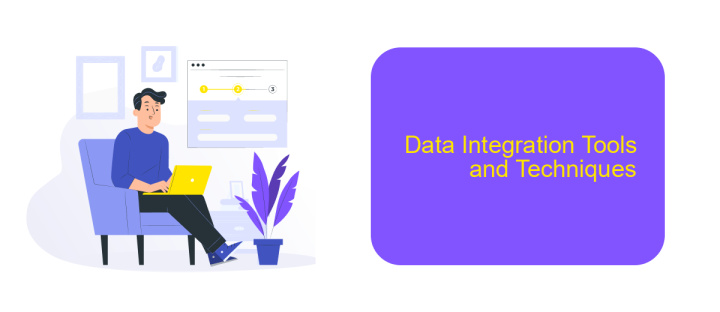Read the Definitive Guide to Data Integration Online
In today's data-driven world, seamless data integration is crucial for businesses to thrive. "Read the Definitive Guide to Data Integration Online" offers comprehensive insights into the best practices, tools, and strategies for integrating data across various platforms. Whether you're a seasoned IT professional or a newcomer, this guide provides the essential knowledge to streamline your data processes effectively.
Introduction
Data integration is a critical aspect of modern business operations, enabling seamless communication between disparate systems and enhancing overall efficiency. As organizations increasingly rely on diverse software solutions, the need for effective data integration becomes paramount. This guide will provide you with essential insights and strategies to streamline your data integration processes.
- Understanding data integration fundamentals
- Key benefits of effective data integration
- Common challenges and how to overcome them
- Tools and services to facilitate data integration
One of the prominent tools for data integration is ApiX-Drive, which offers a user-friendly platform to connect various applications effortlessly. By leveraging such services, businesses can automate data transfer, reduce manual errors, and ensure real-time data synchronization. This guide aims to equip you with the knowledge and tools needed to optimize your data integration efforts, ultimately driving productivity and growth.
Benefits of Data Integration

Data integration is a critical component for businesses aiming to streamline operations and make informed decisions. By consolidating data from various sources, organizations can achieve a unified view of their information, enhancing data accuracy and consistency. This not only facilitates better decision-making but also improves operational efficiency by reducing the time and effort required to manage disparate data sources. Furthermore, data integration enables real-time data access, which is essential for timely responses to market changes and customer needs.
One of the significant benefits of data integration is the ability to automate workflows and processes. Tools like ApiX-Drive make it easier to set up and manage integrations by providing a user-friendly interface and robust features. With ApiX-Drive, businesses can effortlessly connect various applications and services, ensuring seamless data flow across the organization. This automation reduces manual intervention, minimizes errors, and allows teams to focus on more strategic tasks. Overall, data integration not only optimizes business processes but also provides a solid foundation for advanced analytics and business intelligence.
Data Integration Challenges

Data integration is a crucial process for modern businesses, but it comes with its own set of challenges. These challenges can hinder the seamless flow of information across different systems, affecting overall efficiency and decision-making.
- Data Silos: Different departments often use distinct systems, leading to isolated data that is difficult to integrate.
- Data Quality: Inconsistent or inaccurate data can compromise the integrity of the integrated system.
- Scalability: As businesses grow, the integration solution must scale to handle increasing volumes of data.
- Security: Ensuring data privacy and compliance with regulations is critical during integration.
- Complexity: Integrating diverse systems with varying formats and protocols can be technically challenging.
To address these challenges, businesses can leverage integration platforms like ApiX-Drive. ApiX-Drive simplifies the integration process by providing a user-friendly interface and pre-built connectors for various applications, ensuring data flows seamlessly and securely across systems. This not only enhances data quality and scalability but also reduces the complexity and time required for integration.
Data Integration Tools and Techniques

Data integration is a critical aspect of modern data management, enabling businesses to consolidate information from various sources into a single, coherent data set. This process ensures that data is accessible, accurate, and actionable, thereby enhancing decision-making and operational efficiency.
Numerous tools and techniques are available to facilitate data integration, catering to different needs and complexities. These tools help automate data workflows, reduce manual intervention, and ensure data consistency across platforms.
- ETL (Extract, Transform, Load) Tools: These tools extract data from different sources, transform it into a usable format, and load it into a target system.
- API Integration Platforms: Services like ApiX-Drive enable seamless integration between various applications by automating data transfer through APIs.
- Data Virtualization: This technique allows real-time data access without the need to move or replicate data, providing a unified view of information.
- Data Warehousing: Centralized repositories store integrated data from multiple sources, facilitating comprehensive analysis and reporting.
Choosing the right data integration tool depends on factors such as data volume, complexity, and specific business needs. By leveraging these tools effectively, organizations can ensure that their data is reliable, up-to-date, and ready to drive strategic insights.


Best Practices for Data Integration
Effective data integration requires a clear strategy and adherence to best practices. Start by establishing data governance policies to ensure data quality, consistency, and security. Define clear objectives and identify the data sources and destinations. Use standardized data formats and protocols to facilitate seamless integration. Regularly monitor and audit data flows to detect and resolve issues promptly.
Automate data integration processes wherever possible to reduce manual effort and errors. Tools like ApiX-Drive can significantly streamline this process by offering pre-built connectors and an intuitive interface. Ensure that your integration solution is scalable and flexible to accommodate future changes. Finally, maintain comprehensive documentation and provide training to your team to ensure they are well-versed in the integration processes and tools being used.
FAQ
What is data integration?
Why is data integration important for businesses?
What are the common challenges in data integration?
How can I automate data integration processes?
Can data integration improve data accuracy?
Strive to take your business to the next level, achieve your goals faster and more efficiently? Apix-Drive is your reliable assistant for these tasks. An online service and application connector will help you automate key business processes and get rid of the routine. You and your employees will free up time for important core tasks. Try Apix-Drive features for free to see the effectiveness of the online connector for yourself.

